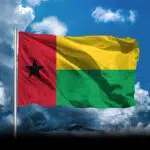Guinea-Bissau celebrates Pidjiguiti Day on August 3 each year as a national holiday. This day marks the anniversary of the Pidjiguiti massacre, which occurred on this date in 1959.
On August 3, 1959, sailors and dockworkers at the Pinjiguiti port in Bissau, who were working for the influential Casa Gouveia at the time, revolted and sought improved working conditions and pay raises. In response, the Portuguese colonial authorities forcefully repressed them, resulting in roughly 50 deaths and hundreds of injuries.
History of Pidjiguiti Day
Since the 1800s, Guinea-Bissau was under Portuguese rule. In the 1950s, a push for national independence swept Africa, and Guinea-Bissau was no different. Amilcar Cabral founded the African Party for the Independence of Guinea and Cape Verde (P.A.I.G.C.) in 1956. The P.A.I.G.C.’s first major act, in support of nonviolent independence, was to call for a strike for higher pay at the Port of Bissau’s Pidjiguiti Docks. On August 3, 1959, a significant number of dockworkers joined the strike and took control of the port, effectively shutting it down.
When security forces stormed the gate, the International and State Defense Police (PIDE) launched an offensive to reclaim the port from the strikers. They opened fire on the group, killing 50 protesters and injuring many others. Others were arrested and suffered torture at the hands of the PIDE.
The P.A.I.G.C. and other supporters of independence saw these acts as a turning point in the organization of opposition to colonial power. They soon decided to abandon the nonviolent approach in favor of more proactive measures. In 1963, an armed conflict ensued, culminating in the independence of Guinea-Bissau in 1973 and Cape Verde in 1975. In remembrance of the massacre victims, a sculpture (a clenched fist) called Mão de Timba, which roughly translates to “the hand of a crook” or a “person who accrues debt and doesn’t plan to pay it back,” was erected in the port of Pinjiguiti.
Pidjiguiti Day timeline
The African Party for the Independence of Guinea and Cape Verde (P.A.I.G.C.) is founded by Amilcar Cabral.
PIDE forces open fire on August 3, killing and injuring nonviolent protesters.
The independence military campaign begins.
Guinea-Bissau finally breaks free from Portuguese rule.
Pidjiguiti Day FAQs
What is Guinea-Bissau known for?
Guinea-Bissau is the world’s sixth-largest producer of cashew nuts. This is its main source of foreign exchange income. Guinea-Bissau also exports frozen seafood, peanuts, palm kernels, fish, and timber.
What are the ethnic groups in Guinea-Bissau?
The ethnic groups that make up Bissau-Guineans are as follows: Fula and Mandinka-speaking people, who make up the majority of the population and live in the north and northeast; and the Balanta and Papel people, who live along the southern coast.
What does the flag of Guinea-Bissau represent?
The colors red, yellow, and green represent the bloodshed during the struggle for independence, the sun, and hope, respectively. The flag includes traditional pan-African colors: green, gold, and red, as well as the African Black Star. The Ghanaian flag has a strong influence on the design of the Guinea-Bissau flag.
How to Observe Pidjiguiti Day
Join the march
Celebrating Pidjiguiti Day in Guinea-Bissau is by lighting candles or participating in torchlight processions. Join the march if you happen to be in the area or hold a vigil of your own.
Observe five minutes of silence
Observing a five-minute national period of silence is also mandatory on this day. Honor the victims of the massacre by joining in.
Listen to the speech
Delivering a solemn speech by the President of Guinea-Bissau is also a mainstay on this day. The speech is broadcast on television and watched by the entire country.
5 Important Facts About Pidjiguiti Day
Popular
Guinea-Bissau, Equatorial Guinea, Guinea, and Papua New Guinea all share the designation ‘Guinea.’
Gabu
Guinea-Bissau was once a sub-kingdom known as Gabu, which was ruled by the Mali Empire.
Poor odds
Guinea-Bissau has one of the lowest life expectancies in the world: with a life expectancy of only 58 years as of 2021, it was the ninth-lowest.
Air pollution
According to the Facts Institute, it was the sixth-worst in terms of air pollution in the world in 2021.
Not shortlisted
Guinea-Bissau is one of only 27 countries with no UNESCO World Heritage sites.
Why Pidjiguiti Day is Important
It’s a reminder of the Pidjiguiti massacre
On this day in 1959, the Pidjiguiti massacre occurred. The celebration sparks debates and policies to ensure that it does not happen again.
Remembering the victims
The victims of the massacre are remembered and their sacrifice is honored. Torchlight processions celebrate the lives of those lost on this day in 1959.
Celebrating freedom
The day celebrates freedom from the oppression of colonial rule. It celebrates the first step that would eventually lead to independence for Guinea-Bissau and Cape Verde.
Pidjiguiti Day dates
| Year | Date | Day |
|---|---|---|
| 2025 | August 3 | Sunday |
| 2026 | August 3 | Monday |
| 2027 | August 3 | Tuesday |
| 2028 | August 3 | Thursday |
| 2029 | August 3 | Friday |



















